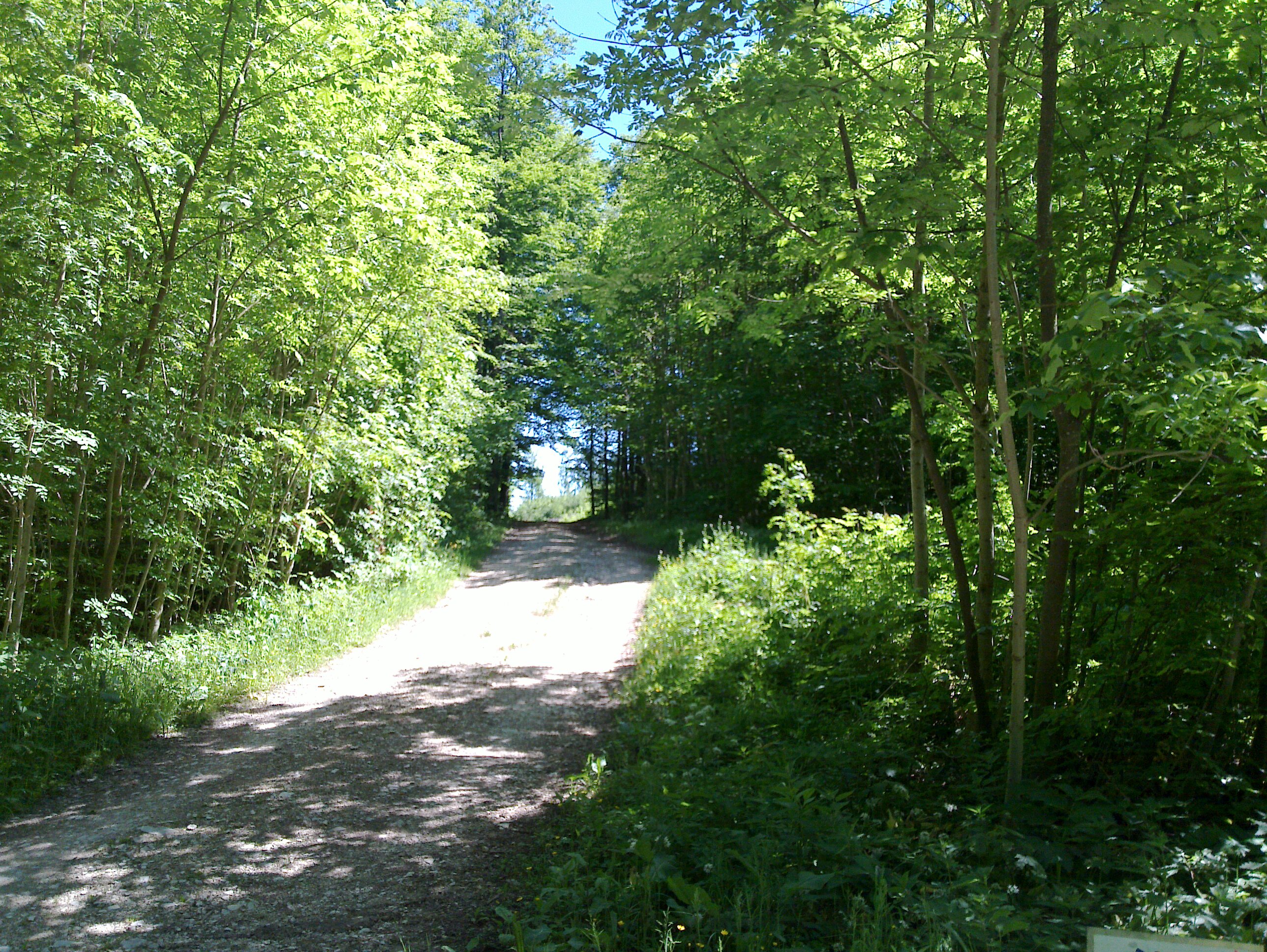In forests we usually find unpaved roads like this:

Now we should observe how they are constructed. Usually the need to somehow allow access to areas in the forest. It does not have to be the shortest connection, it does not have to be as flat as possible, it is not required to build for high speed and it is not at all required to build for high capacity.
Often it is necessary that trucks and heavy machinery can use the road. So it needs to be constructed in a way that it withstands occasional usage by heavy vehicles, for example to extract wood from the forest or in bad cases to fight a forest fire. And the network usually provides a reasonable way for a truck with a trailer to get out again by driving forward only.
Apart from this there is one very important requirement. The construction must be cheap. It should usually be so cheap that it can easily be paid by a relatively small fraction of the money that is obtained by selling the wood from the forest. There can be a significant secondary use for recreational purposes or even as route through the forest, typically for MTBs and pedestrians, which might justify using money from other sources than the revenue from the forest. Interestingly forests in Switzerland have much denser road networks than forests in Norway or Sweden.
What we never see is forest roads that are somehow prepared for the case that it might be decided in the future to expand them to eight lanes or to transform them into high speed highways. It would be good to use a route that allows this, to already pass hills with cuts or tunnels and to build bridges already much wider than currently necessary. Real highways usually run on a dam or at least they include a thick sequence of layers that often add up to a few meters under the upper asphalt layer. There are „best practices“ about building highways, even relatively narrow highways like this one:

They are mostly ignored, apart from very universal principals that apply to any kind of construction.
One kilometer of forest road costs a very tiny fraction of one kilometer of such a highway with two lanes.
We should learn from this for our IT solutions. We should think how big our IT solution might actually become. How many customers do we need to serve? What kind of sophisticated functionality needs to be added? Very often we see the mistake that IT solution are built too small. They do not scale, cannot easily be expanded or simply not serve the load or the availability requirements.
Companies like Google. Facebook, Twitter, Netflix or VK serve millions of users 7×24. There is even an implicit promise that there will be no down times and people start relying on this.
We expect banking software to be accurate to the cent. Not sometimes, but always.
Running a device in a chemical plant or steering a rocket requires absolutely reliable software. Errors can be very expensive and cost human lives.
On the other hand there is plenty of software that is useful. Of course it needs to work properly. But the requirements are much lower. A typical app for a mobile phone does not need to be able to run on millions of servers simultaneously. Downtimes during software updates are no problem. Usually a small development team is sufficient to build them. And when it comes to money, the real business logic for this is usually on the server. And we just should not control a chemical plant by a mobile phone app. But mobile phone apps usually have to come at neglectable prices to the users. They either have to pay themselves by the business that they indirectly promote or by a very small amount of money per user, usually combined with a very small number of users.
It is important to really understand the requirements well and build the right size of application. Building too small is very bad, but building too big can be as bad for the project and the organization. And even if the company is lucky and discovers that the software is so attractive that a bigger solution is necessary, then maybe this is a good moment to rewrite it and consider the first version as proof of concept.
Whenever a new highway is built on a route that is previously only covered by a forest road, the highway will usually be built from scratch, ignoring the routing of the old forest road. If the forest road becomes obsolete by that, then the money for the original construction of the forest road is neglectable. Trying to transform a forest road into a highway did happen in many small steps over centuries to create part of our current road network, but it is usually not a recommended approach.
